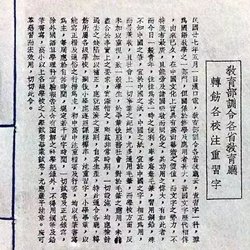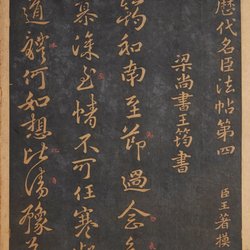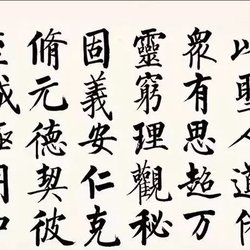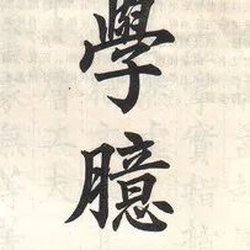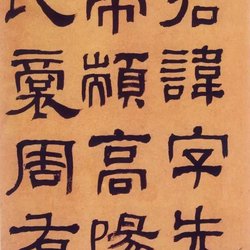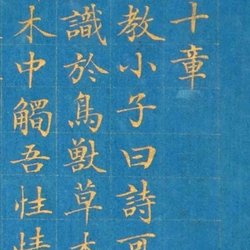Regular script developed into the Tang Dynasty and was highly mature, reaching an unprecedented peak. After that, those who studied regular script all took Tang regular script as their standard, which was difficult to surpass. It was not until the Yuan Dynasty that Zhao Mengju used the running script to transform Tang Kaihua, and regular script became a change. From then on, in the history of calligraphy, there was the "Zhao Kai" that is comparable to Tang Kai "Yan, Liu, Ou, Chu". explain.
In the Qing Dynasty, Deng Shiru's regular script adopted the stele method of the Six Dynasties, as well as the style of Ouyang Xun and his son. His writing style was decisive and the characters were tightly knotted, which made him vigorous and powerful, and opened up a new path besides Tang Kai script. Although the achievements of his regular script works cannot be compared with those of "Yan, Liu, Ou, and Zhao", from the perspective of the history of calligraphy, his pioneering regular script method has become the evidence of the stele study movement in the Qing Dynasty and had a great impact on later generations. Big impact, far-reaching significance.
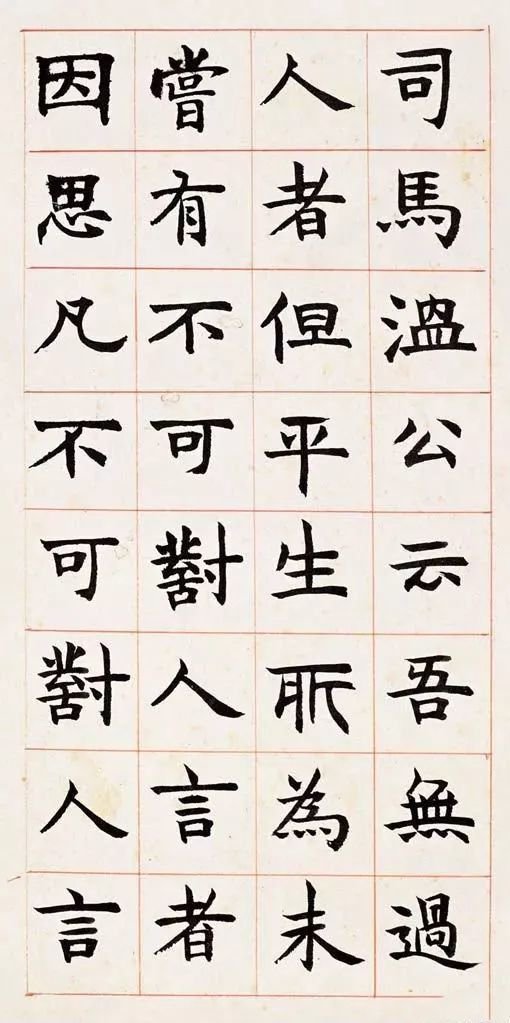
Deng Shiru's "Presented to Kenyuan in Regular Script with Four Volumes" (Part 1) 31.5×16.5cm
We know that the Han, Wei and Six Dynasties were a period of great social turmoil. From a philological perspective, it was a transition period from official script to regular script. Regular script did not fully mature until the Tang Dynasty. Deng Shiru's method of selecting regular script was very different from that of calligraphers at that time. He did not adopt the mature Tang script, but adopted the regular script of the Six Dynasties during the period when regular script was formed. There are factors such as the general background of the calligraphy style of the times and Deng's personal pursuits at play.
So, what is the general background of the calligraphy style of the times? How was Deng's personal pursuit realized?
Let's first take a look at the background of calligraphy style in Deng Shiru's era. The calligraphy of the early Qing Dynasty inherited the legacy of the Ming Dynasty. Influential calligraphers in the calligraphy world are represented by Wang Duo, Fu Shan, Zhu Da, Guizhuang, Song Cao, Maoxiang, etc. They were all good at cursive calligraphy, among which Wang Duo, Fu Shan and Zhu Da were particularly influential. The unruly calligraphy style in the late Ming Dynasty did not develop in the Qing Dynasty. Calligraphy style is a reflection of the times. The policy of restricting culture in the Qing Dynasty caused the wild calligraphy style to lose a good environment for survival, so there were few calligraphers in the Qing Dynasty who wrote wild cursive calligraphy.
Among the emperors of the Qing Dynasty, Emperor Kangxi loved Dong Qichang's calligraphy, and Emperor Qianlong admired Zhao Mengju's calligraphy. Affected by this, most calligraphers only regarded Zhao and Dong as their models. The style of pavilions and pavilions used in the imperial examinations in the Qing Dynasty required black, square, and light colors. For a while, the calligraphy style became weak and charming. Representative calligraphers at that time included Shen Quan, Gao Shiqi, Chen Yixi, and the so-called "Four Great Masters of Kangxi" Da Chongguang, Jiang Chenying, He Zhuo, and Wang Shiya.
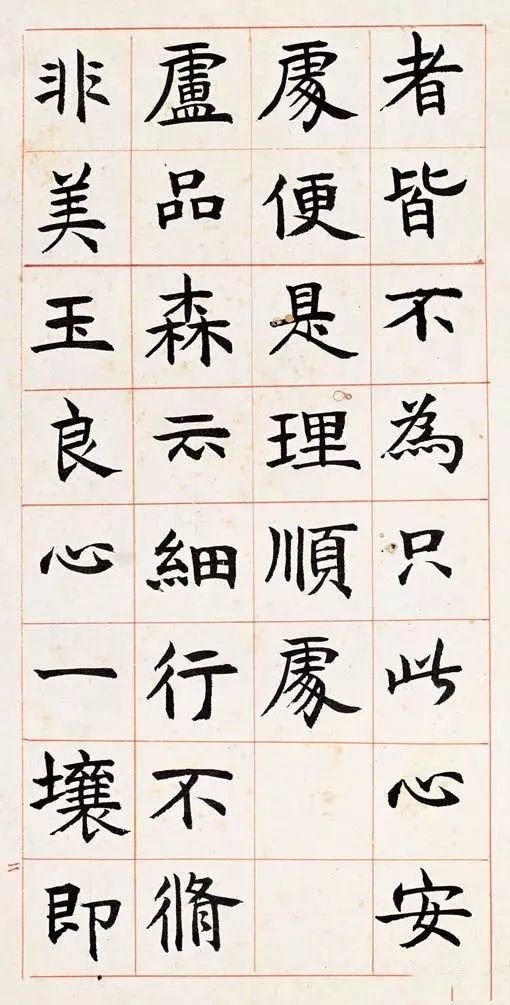
Deng Shiru's "Presented to Kenyuan in Regular Script with Four Volumes" (Part 2) 31.5×16.5cm
In the mid-Qing Dynasty, calligraphers Zhang Zhao, Wang Youdun, Kong Jishu, etc. were all based on calligraphy. Among them, Zhang Zhaoxingkai first learned from Dong Qichang, followed by Yan Zhenqing and Mi Fu, and achieved some achievements. The four masters of Tie Xue during this period were Liu Yong, Wang Wenzhi, Liang Tongshu and Weng Fanggang. Liu Yong's calligraphy was inspired by Dong Qichang's. In his later years, he was involved in the study of stele, striving to be steady and solid. Wang Wenzhi's calligraphy is based on the spirit of wind, which exudes elegance and elegance while being steady. Liang Tongshu's regular script and running script are all distinguished by elegance.
Weng Fanggang's calligraphy is good at small block script. He spared no effort in studying Tang steles and also dabbled in Han steles. In addition, Yao Nai's cursive script is elegant and graceful, Qian Liyan's regular script is plump and thick, Tie Bao's cursive script is rich and elegant, as well as Zhang Wentao, Guo Shangxian and other calligraphers. All are quite famous. The mainstream calligraphy styles at that time included the four calligraphers "Weng, Liu, Cheng, and Tie", namely Weng Fanggang, Liu Yong, Prince Cheng (Yong Li), and Tie Bao. Their popularity was unmatched by anyone at the time. of.
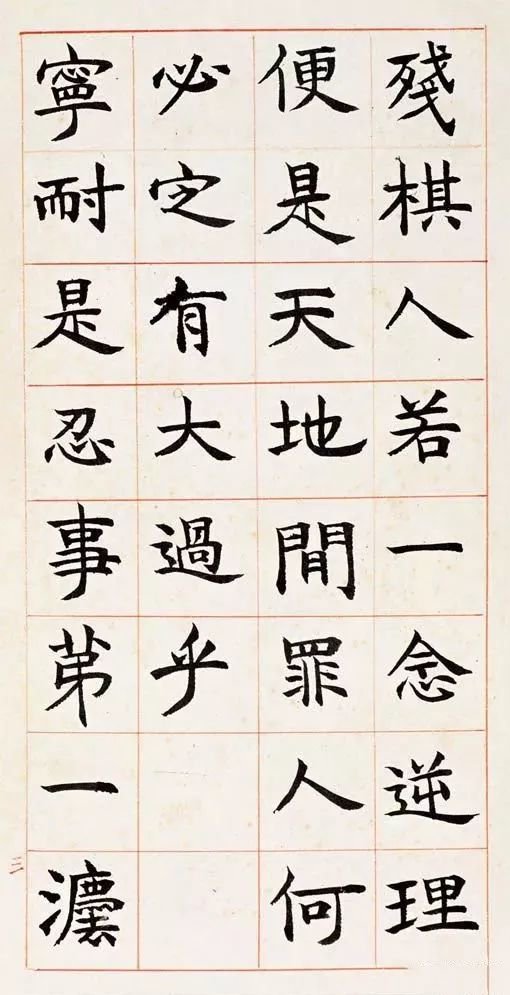
Deng Shiru's "Present to Kenyuan in Regular Script with Four-Style Books" (Part 3) 31.5×16.5cm
During the Qianlong and Jiaqing years, scholars began to study epigraphic textual research. Calligraphers also broadened their horizons from epigraphic textual research, and the study of stele became more and more popular. It is against this background that Deng Shiru engages in his calligraphy creation.
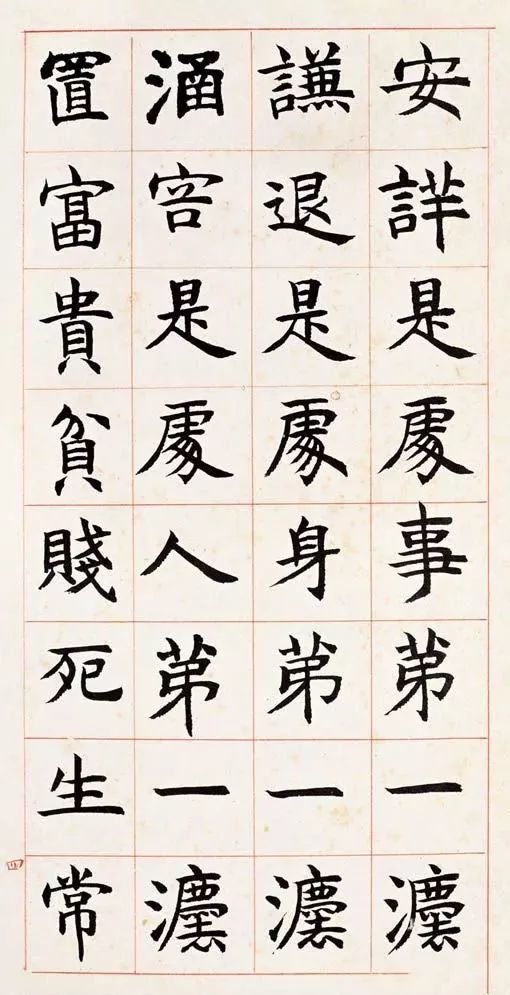
Deng Shiru's "Presented to Kenyuan in Regular Script with Four Volumes" (Part 4) 31.5×16.5cm
Deng Shiru's regular script is mainly based on steles from the Six Dynasties such as "Zhang Menglong", "Jia Shijun", "Stele of King Liang Shixing", "Shimen Inscription", and "痗 Crane Inscription". The beginning and end of the pen are mostly outwardly square but inner. The structure is straight at the top, middle and bottom. It is steady and has a sparse charm. It is sometimes drawn with the strokes of the Han Li script. The style is often more elegant than the seal script. Smart and beautiful, showing grandeur in liveliness.
Deng's regular script was developed during the period when people in the Qing Dynasty were studying Tang Dynasty stele inscriptions and pavilions. They specialized in Wei and Sui dynasty stele inscriptions. In their rigorous structure, they showed changes and sparseness, from toughness to elegance and openness. A healthy retro style required a lot of courage at the time. Yang Han of the Qing Dynasty said in "Xike Zaozhu" that Wanbai's "real calligraphy was deeply rooted in the people of the Six Dynasties, and it was written using the method of seal script and official script. It is unique in its beauty and beauty, and it is definitely not available in modern times."
We read Kang Youwei's postscript in the lower right couplet of the "Regular Script Canghai Shaoling Long Couplet" written by Deng Shiru when he was 54 years old and collected in the Palace Museum: "The seal script of the people of Wanbai Mountain is the most comprehensive collection in modern times. That is, regular script is also based on the original north and south steles and is an innovative style. The writing is as powerful as Cast iron, the painting technique is particularly thick." This couplet has a sharp edge, sharp turns, clear pauses and setbacks, as sharp as a knife, an axe, and an axe. In terms of calligraphy, there are many vertical postures, the middle palace is quite tight, the back is stretched, and the spirit is shining out. It has a brand-new appearance, which reflects the innovative style based on the profound foundation of stele studies.
"Gift to Kenyuan Four-Style Book" is dated 1799 to Meng Dongyue in the official script. It can be seen that it was created by Deng Shiru when he was 57 years old. The regular script part can be regarded as Deng Shiru's representative work in regular script. This function is the center of the pen, the knot is square, and it has a peaceful state and a bookish atmosphere. When Deng was 62 years old, he wrote "Seven Character Couplets in Regular Script I don't know when". The writing style is plain and thick, the wording is rigorous and free and easy, and it has a temple atmosphere. It is a rare masterpiece of regular script written by Deng Shiru in his later years.
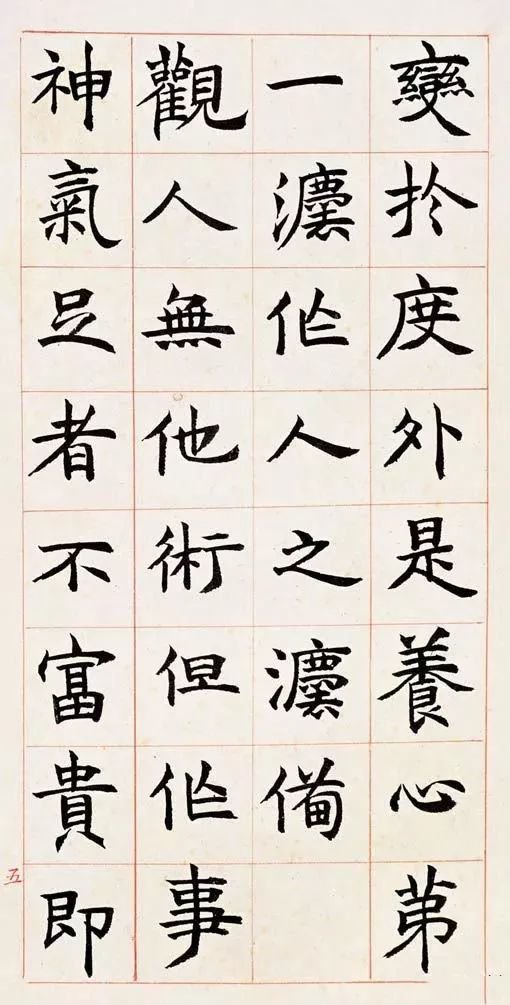
Deng Shiru's "Presented to Kenyuan in Regular Script with Four Volumes" (Part 5) 31.5×16.5cm
As the banner of the Stele School of calligraphy, Deng Shiru's regular script has been influencing calligraphy since the mid-Qing Dynasty with his unique style. His pioneering approach of switching from Tang Kaikai to Wei Kai inspired later calligraphers in many aspects and made them less ideologically constrained, opening the door to spiritual freedom in calligraphy creation.
Pictures and texts: Source network/Copyright: All rights reserved to the original author

